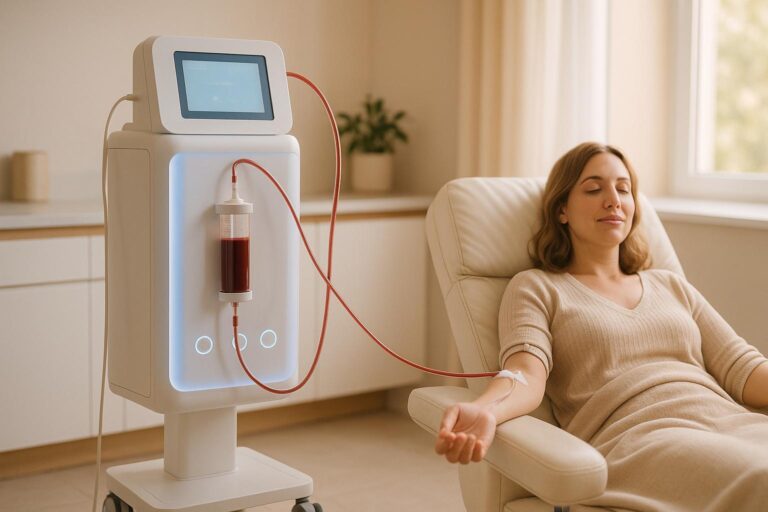Chronic pain affects over 51.6 million adults in the U.S., with nearly 40% also experiencing mental health challenges like depression or anxiety. It’s not just physical discomfort – it impacts relationships, work, and emotional well-being. Emerging research highlights that mindset and resilience significantly shape how pain is experienced and managed. Here’s what you need to know:
- Mindset matters: A growth mindset (believing pain can be influenced) leads to lower pain intensity and better outcomes than a fixed mindset (viewing pain as unchangeable).
- Resilience can be built: Strategies like cognitive-behavioral therapy (CBT), mindfulness, and positive thinking reduce pain and improve coping skills.
- Social support helps: Strong connections and meaningful activities improve pain tolerance and mental health.
- Integrated care is key: Combining physical treatments (e.g., chiropractic care) with mental strategies offers better results than addressing pain or mental health alone.
How to Build Resilience while Living with Chronic Pain: Tips from a Psychologist & Pain Researcher
How Mindset Influences Chronic Pain Management
Our mindset plays a powerful role in shaping how we experience and manage pain. Studies reveal that whether we view pain as something fixed or as something we can influence directly impacts pain intensity, daily functioning, and overall quality of life.
The contrast between a fixed mindset and a growth mindset is striking. People with a fixed mindset see pain as permanent and unchangeable. They often interpret setbacks as proof that improvement is impossible. On the other hand, those with a growth mindset believe they can influence their pain. They understand that consistent effort and perseverance can lead to better outcomes.
This difference in perspective has real-world consequences. Individuals with a fixed mindset report higher levels of pain and disability compared to those with a growth mindset. They also tend to have more negative thoughts, display behaviors that reinforce pain, and experience poorer overall outcomes.
| Fixed Mindset | Growth Mindset |
|---|---|
| Believe pain is unchangeable | Believe pain can be influenced |
| Avoid activities to prevent failure | View challenges as opportunities |
| Treat setbacks as permanent failures | See setbacks as temporary and solvable |
| Dismiss healthcare feedback | Use feedback to improve |
| Give up when treatments don’t work immediately | Persist in learning coping strategies |
This highlights why cognitive approaches are a key part of effective pain management.
Research on Positive Mindset Benefits
A growth mindset encourages positive emotions, which have been shown to significantly reduce pain. Positive emotions – such as optimism and joy – are not just mood boosters; they’re powerful tools in managing chronic pain. Positive emotions are linked to lower pain intensity and better adaptation to long-term pain.
The benefits of positive thinking go beyond just feeling better. Positive emotions reduce the negative impact of pain on daily functioning and well-being, especially in conditions like rheumatoid arthritis. People who maintain an optimistic outlook are often better equipped to maintain their routines and relationships, even in the face of persistent pain.
Research backs this up. Studies show that fostering positive emotions reduces pain intensity. Positive feelings help expand attention and thinking, counteracting the narrowing effects of negative emotions.
For example, pain reprocessing therapy (PRT) has shown impressive results. In a clinical trial involving 151 adults with chronic back pain, participants were divided into three groups: PRT, open-label placebo, and usual care. After treatment, 66% of those in the PRT group were pain-free or nearly pain-free, compared to 20% in the placebo group and 10% in the usual care group. These benefits were maintained a year later.
Positive psychology interventions also help reduce pain intensity while promoting emotional well-being. These interventions prevent people from falling into a spiral of negative outcomes and encourage flexible, adaptive thinking.
Dr. Ellen Slawsby of Harvard Medical School underscores the importance of shifting perspective:
"When we’re ill, we often tend to become fixated on what we aren’t able to do. Retraining your focus on what you can do instead of what you can’t will give you a more accurate view of yourself and the world at large."
How Negative Thinking Worsens Pain
While a positive mindset can ease pain, negative thought patterns do the opposite. They intensify pain and make it harder to cope effectively. This creates a vicious cycle where pain triggers negative thoughts, which in turn amplify the sensation of pain.
Catastrophic thinking is particularly harmful. People who catastrophize about their pain often report more intense pain and greater disability. High levels of catastrophizing are linked to increased severity, emotional distress, and overall worse outcomes.
Negative self-talk also plays a damaging role. In one study on individuals with HIV-related neuropathic pain, negative self-statements were strongly associated with difficulty adjusting to chronic pain, greater interference with daily activities, and increased emotional distress.
Chronic pain and depression are closely connected. About 35% to 45% of individuals with chronic pain also experience depressive symptoms. In fact, people living with chronic pain are three times more likely to develop depression compared to those without pain. Negative emotions like anxiety, anger, and despair not only worsen pain but also disrupt daily life.
Tor Wager, a leading neuroscience professor, explains how fear perpetuates the pain cycle:
"That fear and avoidance of pain, and the hypervigilance that goes along with it, actually ends up being a root cause of persistent pain."
Changing how we think about pain can bring lasting relief. Cognitive therapy focuses on identifying and reshaping unhelpful thoughts to improve emotional resilience and coping skills. By recognizing and addressing cognitive biases, individuals can develop healthier, more adaptive strategies for managing chronic pain.
Understanding the connection between mindset and pain gives individuals the tools to take an active role in their pain management. By shifting their thought patterns and building resilience, they can improve their quality of life and find ways to better navigate the challenges of chronic pain. These skills, like any others, can be learned and strengthened over time.
Building Resilience: Proven Psychological and Lifestyle Methods
Resilience isn’t something you’re simply born with – it’s a skill you can develop. When paired with physical treatments, mental strategies provide the tools you need to better manage chronic pain. Research highlights the role of psychological techniques and therapy in cultivating resilience, which is key to handling both the physical and emotional toll of ongoing pain.
At its core, resilience is built on three main pillars: fostering positive emotions, maintaining mental and emotional flexibility, and nurturing strong social connections. These elements work together to shield against the psychological challenges that chronic pain can bring. Dr. Afton Hassett from the University of Michigan‘s Chronic Pain and Fatigue Research Center puts it simply:
"Adversity is part of the human condition; what matters is how you respond to it. The unifying principle of resilience is that when someone experiences adversity, they can recover, can bounce back."
Psychological Treatment Options
Several proven psychological approaches can help strengthen resilience and improve chronic pain management. Techniques such as cognitive-behavioral therapy (CBT), acceptance and commitment therapy (ACT), and mindfulness-based practices have shown significant benefits. Each method offers unique tools and can be tailored to individual needs.
- Cognitive-Behavioral Therapy (CBT) focuses on identifying and challenging negative thought patterns that can amplify pain and disability. It helps replace these with healthier beliefs and behaviors, improving both mental outlook and physical functioning.
- Acceptance and Commitment Therapy (ACT) encourages embracing the present moment while accepting your thoughts and feelings. This approach helps you focus on meaningful, long-term goals rather than becoming overwhelmed by pain.
- Mindfulness Practices center on observing pain without letting it take control. By increasing awareness of the present moment, mindfulness creates room for thoughtful, measured responses to pain.
Positive activity interventions (PAIs), which are rooted in CBT, are another effective option. These simple and accessible practices are ideal for those hesitant to pursue traditional therapy. Research shows that engaging in PAIs can significantly reduce pain, depression, and anxiety. In fact, studies suggest that positive emotions like optimism can reduce pain and medication use by as much as 92%.
Relaxation techniques, such as deep breathing, meditation, and visualization, also play a role in managing pain flares by lowering stress and muscle tension. Together, these therapies and techniques provide a comprehensive toolkit for resilience.
Daily Practices That Build Resilience
Building resilience is an ongoing process that benefits from consistent, daily effort. Incorporating enjoyable activities into your routine can make a significant difference. Dr. Hassett advises:
"Schedule time for enjoyable activities three or four times a week and commit to them consistently."
This could mean setting aside time for hobbies, socializing, or creative outlets that bring joy and take your mind off the pain.
Practices like keeping a gratitude journal can shift your focus away from pain and broaden your perspective. Acts of kindness, volunteering, or simply savoring joyful moments can help cultivate positive emotions and a sense of purpose.
Healthy lifestyle habits are equally important. Eating a balanced diet, getting enough sleep, and engaging in gentle physical activity that respects your limitations all contribute to your body’s ability to cope with pain [12, 35]. Movement, even in small doses, can activate natural resilience mechanisms.
Positive self-talk is another powerful tool. Reframing negative thoughts – such as replacing "This pain will never get better" with "I’m finding new ways to manage my pain every day" – can help you maintain a more constructive mindset. Setting realistic goals and being flexible when adjusting them also prevents unnecessary frustration. Research suggests that goal flexibility, even more than persistence, can ease the emotional burden of pain.
Finally, connecting with others who understand your experience – through support groups or therapy – can combat feelings of isolation and strengthen your resilience. As Dr. Hassett points out:
"PAIs are powerful because they’re not stigmatizing; they’re not about sending people to a therapist." – Afton Hassett, PhD
sbb-itb-d9e542d
Social Support and Purpose in Pain Management
Living with chronic pain often leads to isolation, as pulling away from friends and family can intensify both physical discomfort and emotional struggles. However, research highlights that staying connected with others and participating in meaningful activities can disrupt this cycle, fostering resilience and improving quality of life. These connections create a foundation for engaging in purposeful actions that help manage pain.
Research on Social Support Networks
Having a solid support system can make a world of difference when dealing with chronic pain. Studies show that social connections not only boost emotional well-being but also influence how we perceive pain by reducing stress responses. For instance, research involving AARP Medicare Supplement insureds revealed that individuals with high resilience and diverse social networks were less likely to experience moderate to severe pain. Considering that chronic pain impacts over 100 million adults in the U.S., with 38–50% of older adults affected, the importance of social support cannot be overstated.
Social connections help by easing the stress linked to pain, encouraging better coping strategies, and reframing how stress is perceived. In fact, greater social support has been shown to lower psychological distress in individuals suffering from chronic pain. On the flip side, those without strong social ties were found to be 1.9 to 3 times more likely to die from conditions like ischemic heart disease, stroke, or cancer over a nine-year period.
Support can come from many places, including friends, family, or community groups. Group-based programs, in particular, offer a sense of belonging and allow individuals with similar struggles to share experiences and solutions in a supportive environment.
In short, a strong network of support doesn’t just ease immediate distress – it also makes daily pain management strategies more effective.
Participating in Meaningful Activities
Once a foundation of social support is in place, engaging in purposeful activities can further strengthen resilience against chronic pain. A sense of purpose has been linked to higher pain tolerance and even quicker recovery times after medical procedures like knee replacement surgery.
Sticking to positive habits, setting meaningful goals, and staying socially active are key to building resilience. Environments that encourage recovery-focused efforts can amplify these benefits.
Even small, everyday activities can make a big difference. Whether it’s having a heartfelt conversation, pursuing a hobby, or volunteering, these actions not only distract from pain but also reinforce a sense of identity. Building and maintaining positive relationships may require setting boundaries, expressing needs clearly, and offering mutual support.
Together, strong social networks and purposeful activities are vital tools for managing chronic pain. They help reduce emotional distress, improve coping mechanisms, and enhance overall well-being.
Combined Physical and Mental Approaches to Chronic Pain
Tackling chronic pain effectively often requires a combination of physical and psychological treatments. This dual approach addresses both the physical causes and the mental resilience needed to manage pain. Research shows that about 67% of individuals with chronic pain also have a mental health condition, and those with mental illnesses are at least twice as likely to experience chronic pain compared to the general population. Studies suggest that psychological therapies are most effective when paired with physical treatments. Unlike traditional methods such as NSAIDs, opioids, and steroids, these integrative approaches come with fewer side effects and target multiple aspects of the pain experience.
For example, adding pain education to physical therapy has been shown to cut depression levels in half compared to physical therapy alone. In another case, the 3RP program significantly boosted resilience scores – with effect sizes ranging from 0.73 to 1.33 – for participants with neurofibromatosis. Additionally, nine out of sixteen participants reported less catastrophic thinking about their condition.
Gonstead Chiropractic Care and Functional Medicine
Kinnection Clinic applies these integrated principles by offering Gonstead chiropractic care and functional medicine, a combination that addresses both physical pain and mental resilience. This approach focuses on correcting structural and biochemical imbalances to promote healing and improve overall well-being.
"Chiropractic care plays a crucial role in functional medicine by correcting structural abnormalities and promoting ideal bodily function…helps in establishing an environment in which the body can recover and perform at its peak by adjusting spinal misalignments and enhancing nerve function."
– Dr. Kelly Blundy, IFMCP, DC, BCIM, ART
Gonstead chiropractic adjustments target spinal misalignments and nerve interference, which helps reduce pain and inflammation. These adjustments also improve blood flow, stimulate the vagus nerve to promote relaxation, and aid in waste elimination. Better circulation helps loosen tight muscles, reduce tension, and enhance range of motion. On a deeper level, realigning the spine can influence brain chemistry by triggering the release of hormones like oxytocin, cortisol, and neurotensin, which help alleviate symptoms of anxiety and depression.
Functional medicine complements chiropractic care by identifying and addressing underlying causes of chronic pain that traditional medicine might miss. This includes factors like nutritional deficiencies, hormonal imbalances, and sensitivities, all of which can contribute to systemic inflammation and chronic discomfort.
Customized Treatment Plans
Kinnection Clinic also emphasizes the importance of personalized care. Customized treatment plans incorporate various therapies to address both physical pain and overall health.
- Regenerative techniques such as PRP (platelet-rich plasma) and peptide therapy focus on cellular repair. When combined with mental resilience strategies, they accelerate recovery and improve pain tolerance.
- Hormone replacement therapy targets imbalances that affect pain perception and emotional health. By optimizing bioidentical hormones, patients often experience better energy levels, improved sleep, and enhanced stress management.
- IV therapy delivers tailored nutrient infusions to support immune function, reduce inflammation, and aid tissue repair. These infusions also help with neurotransmitter production, boosting both physical recovery and mental resilience.
Conclusion: Main Takeaways for Chronic Pain Management
Recent research highlights the importance of mindset and resilience in managing chronic pain, which affects around 20% of adults in the U.S.. These psychological factors can play a pivotal role in improving treatment outcomes and enhancing quality of life.
Resilience, in particular, is key to navigating the challenges of chronic pain. Studies show that maintaining optimism and fostering positive emotions can significantly reduce both pain and disability. Acceptance also proves to be a powerful tool, helping individuals shift their focus from fighting pain to managing it more effectively.
"Adversity is part of the human condition; what matters is how you respond to it. The unifying principle of resilience is that when someone experiences adversity, they can recover, can bounce back." – Afton Hassett, PhD, Associate Professor at the University of Michigan
Social connections and engaging in meaningful activities are equally important in building resilience. People who nurture supportive relationships and explore new pain management strategies often see better outcomes over time.
Mindfulness-based methods have also shown impressive results. For instance, an 8-week mindfulness program reduced chronic pain by 57% in participants, while mindfulness meditation led to a 40% reduction in pain intensity compared to control groups. Even shorter interventions, like three days of mindfulness training, resulted in a 27% decrease in pain levels.
Successful chronic pain management often requires a personalized approach that combines physical and psychological therapies. Plans that integrate cognitive-behavioral techniques, mindfulness practices, and strong social support systems can deliver meaningful relief. For example, clinics like Kinnection Clinic offer tailored treatments that blend psychological resilience-building with physical care, including Gonstead chiropractic techniques and functional medicine. This holistic approach focuses on active coping strategies and resilience to help individuals maintain functionality and improve their overall well-being.
FAQs
How does having a growth mindset improve the management of chronic pain?
Adopting a growth mindset can make a big difference in managing chronic pain. When you focus on learning, adjusting, and keeping a positive outlook, it becomes easier to develop active coping strategies and build resilience. This change in thinking can help lighten the emotional load of pain and boost your overall well-being.
With a growth mindset, challenges become chances to grow instead of barriers. Over time, this way of thinking can lead to better pain management, giving you a sense of control and improving your quality of life.
How can I build resilience to better manage chronic pain?
Managing chronic pain becomes more manageable when you focus on building resilience. Start by incorporating stress management techniques into your routine, such as deep breathing, meditation, or mindfulness practices. These can help calm your mind and reduce tension.
Adopting a positive outlook and concentrating on what’s within your control can also have a big impact. Pair this mindset with regular physical activity tailored to your abilities. Gentle movement not only eases pain but can also boost your mood over time.
It’s equally important to cultivate a supportive social circle and engage in activities that bring meaning and joy to your life. These small, consistent efforts can help you feel more empowered and improve your overall well-being.
How do social connections and meaningful activities help in managing chronic pain?
Building strong relationships and participating in activities that bring purpose to your life can make a big difference when it comes to managing chronic pain. These habits not only help ease feelings of loneliness but also reduce emotional stress and boost your mental health.
When you surround yourself with supportive people and engage in things that truly matter to you, it often leads to better pain management and a more fulfilling life. These approaches encourage a resilient outlook and a positive mindset – both of which are key to handling chronic pain more effectively.



